Overpopulation
Is Overpopulation a problem?
By looking at this graph from the Wikipedia Page is sure looks like we are heading for a major problem considering almost all the growth has happened in the last 100 years and we had two world wars and a major pandemic in 1918 that claimed to take 5% of the world’s population.

Our world grows in the amount of people at a rate of;
– 80 million per/year
– 1.5 million per/week
– 250,000 per/day
– 10,000 per/hour
I vaguely recall reading a book called “The Myth of Overpopulation” or something like that and one thing that stuck was the claim that you could fit the entire world’s population in a 2000 sq/ft home in the State of Texas alone. Let’s do the math on this claim;

Back when the book came out there was only about 6 billion people on the planet and rounding off the sq/km is 697,000 sq/km in the state. Convert 697,000 sq/km into meters = 697,000,000 sq/m, Divided by 6,000,000,000 = 8.6 sq/m per/person (92.5 sq/ft). Apparently this is true which kind of puts population in a different perspective.
I live in Qingdao, Shandong Province. There is almost 100 Million people in this province according to Wikipedia and local sources. Me and some friends ride motorcycles and traveled this whole province and I tell you and have commented to all my friends that I almost don’t believe these statistics because I just don’t see that kind of population. If it is true then it sure seems like it is not a big problem for the world to hold a lot of people. (Note: Most of the people don’t drive cars, have relatively poor life style with very little movement or activity.)

So what’s the problem?

[Sir David Attenborough on Overpopulation]
Sir David performed an outstanding talk about overpopulation to an affluent audience in England. Sir David is a passionate Naturalist and excellent story teller. According to Attenborough this is considered to be one of the major problems the world faces as it underlines all other problems.
He point that the industrialization of the world has literally change the chemical composition of our air, ocean and lands and temperature of our planet. He claims there is one factor that ties this all together and that is the increase of population. That increase exacerbates all the other problems;
– Global warming
– Desertification
– Pollution or land, air, water
– Species extinctions
– Spread of diseases
– Growing and supplying of food
– Poverty, Conflict, Resource depletion
The Stats on Population:
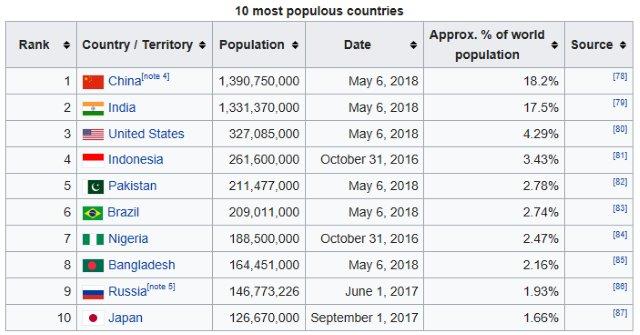
Approximately 4.3 billion people live in these ten countries, representing around 58% of the world’s population.
From <https://en.wikipedia.org/wiki/World_population>
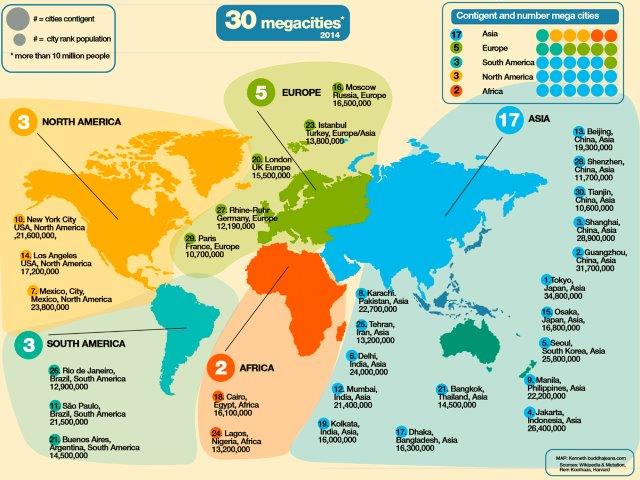
The worlds Mega-Cities all with more than 10,000,000 people:

The 2017 World Population Wall Chart by the United Nations is full of details and data about our world’s population.
4 of the 29 Key Findings are;
1. According to the results of the 2017 Revision, the world’s population reached nearly 7.6 billion in mid-2017. The world has added one billion people since 2005 and two billion since 1993. In 2017, an estimated 50.4 per cent of the world’s population was male and 49.6 per cent female. In 2017, 9 per cent of the global population was under age 5, 26 per cent was under age 15, 13 percent was aged 60 or over, and 2 per cent was aged 80 or over.
2. Current estimates indicate that roughly 83 million people are being added to the world’s population every year. Even assuming that fertility levels will continue to decline, the global population is expected to reach 8.6 billion in 2030, 9.8 billion in 2050 and 11.2 billion in 2100, according to the medium-variant projection.
3. In fact, continued growth of the world’s population is expected at least until 2050, even if the decline of fertility accelerates. The projections of the 2017 Revision indicate that there is a 95 per cent probability that the global population will be between 8.4 and 8.7 billion in 2030, between 9.4 and 10.2 billion in 2050 and between 9.6 and 13.2 billion in 2100.
4. Future population growth is highly dependent on the path that future fertility will take, as relatively small changes in the frequency of childbearing, when projected over several decades, can generate large differences in total population. In the medium-variant projection, it is assumed that the global fertility level will decline from 2.5 births per woman in 2010-2015 to 2.2 in 2045-2050, and then fall to 2.0 by 2095-2100. In an illustrative example where the future fertility level of each country is consistently half a child above the levels assumed for the medium- variant projection, the global population would reach 10.8 billion in 2050 and 16.5 billion in 2100.
5. Click here to get the full Wall Chart and the other 25 key findings. [https://esa.un.org/unpd/wpp/Publications/Files/WPP2017_Wallchart.pdf]
United Nations [https://esa.un.org/unpd/wpp/]
According to the United Nations in the March 2017 report; “The total fertility rate for the world as a whole fell from around 5 live births per woman in 1950-1955 to 2.5 births in 2010-2015. As a result of this global transition, an increasing share of the world’s population now lives in countries where total fertility has fallen below the replacement level of approximately 2.1 live births per woman over a lifetime; at this level of fertility, each generation of parents exactly replaces itself with an equivalent number of children who survive to adulthood, ensuring a long-term growth rate of zero.1 Conversely, a relatively small proportion of the world’s population now lives in countries with high levels of fertility — conventionally defined as more than 5 live births per woman. Given the projected future course of fertility, it is expected that this proportion will continue to decrease. Thus, the end of high fertility is near and should become a reality within the next decade or so, according to the results of the 2017 Revision of the World Population Prospects.”
Click here for report
[https://esa.un.org/unpd/wpp/Publications/Files/PopFacts_2017-3_The-end-of-high-fertility.pdf] or visit United Nations website to view all their publications. [https://esa.un.org/unpd/wpp/Publications/]
[Hans Rosling on global population growth]
Hans Rosling was a Swedish physician, academic, statistician, and public speaker. He was the Professor of International Health at Karolinska Institute and was the co-founder and chairman of the Gapminder Foundation, which developed the Trendalyzer software system. He held presentations around the world, including several TED Talks in which he promoted the use of data to explore development issues. From <https://en.wikipedia.org/wiki/Hans_Rosling>
An excellent speaker, a very entertaining and informative very high tech presentation that explains our human population, how we got to 7 billion and where we are going. Rosling shows us a positive trend and relieves some of the panic and worry about overpopulation.
This graph shows data from the Gapminder program Rosling founded and the divided demographics between the developed countries with small families and long lives compared to the developing countries with large families and short lives since 1963 to the world shift up to 2012. (Below)
Rosling claims that the idea of a “Population Bomb” stirred up by some authors and the media couldn’t be more wrong as demonstrated by the above two slides. [Data from the Gapminder Program – https://www.gapminder.org/]
The below slide try’s to explain why the population increased so dramatically in the last 80 years. He claims this is because of survival rates as show in the below graph. In the 1800’s we had an average of 8 children with only 2 surviving to reproductive age. By the 1900’s with advancement of technology and medicine (industrial revolution) having slightly less children but better survival rates up to today where only two children but all surviving to adulthood.

[Graph heading: Babies born per women in the World]
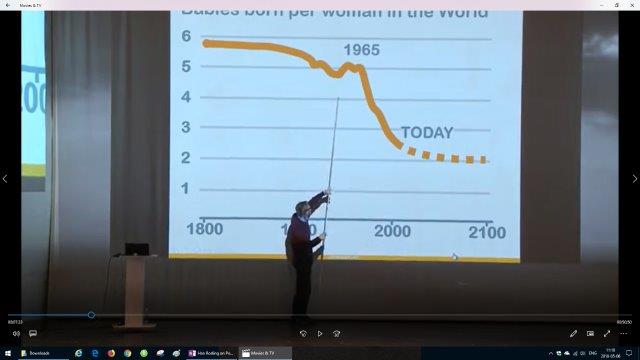
Rosling calls this graph the “Big Fact” of his lifetime and that is that we have reached “Peek Child”. The (numbers of babies born (on average) is now 2 and stable. The United Nations estimates the number of children will not increase throughout this century as shown in the above United Nations report.
Income-Lifespan Graphs
1800 Everyone was down in the poor with short lifespan:

2012 a big shift out of poverty into prosperity. A positive change in world demographics rarely reported by the media, but Rosling cautions us as we still have a long way to go to pull the rest of the 1-2 billion out of poverty.
Skeptics of Overpopulation:
The Population Research Institute (PRI) [https://www.pop.org/] is a (501c3) non-profit research organization whose core values hold that people are the world’s greatest resource. PRI’s goals are to educate on this premise, to expose the myth of overpopulation, and to expose human rights abuses committed in population control programs. Our growing, global network of pro-life groups spans over 30 countries.
We pledge to:
– Debunk the myth of overpopulation, which cheapens human life and paves the way for abusive population control programs.
– Expose the relentless promotion of abortion, abortifacient contraception, and chemical and surgical sterilization in misleadingly labeled “population stabilization,” “family planning,” and “reproductive health” programs.
– Defund these programs by exposing the coercion, deception, and racism inherent in them.
– Emphasize that people are the most valuable resource on the planet, the one resource we cannot do without.
– Promote pro-natal and pro-family attitudes, laws, and policies worldwide.
– Encourage programs to help the poor become agents of their own development.
Criticism of PRI on Wikipedia:
The Population Research Institute (PRI), an anti-abortion, anti-contraception advocacy group, has criticized predictions of overpopulation and attendant resource scarcity, with some describing overpopulation as a “myth”. The PRI argues that advances in agricultural, medical, and industrial technology have allowed global economic productivity to keep pace with rising populations despite Malthusian predictions to the contrary. PRI further says that family sizes are naturally declining worldwide due to higher living standards, increased availability of contraception and better economic opportunities for women. However, other commentators have described PRI’s arguments on overpopulation as deceptive. From <https://en.wikipedia.org/wiki/World_population>
From the Population Research Institute (PRI) is this website dealing specifically on what they deem as “The myth of overpopulation” in which they raise some good points and have a valid debate.
[https://overpopulationisamyth.com/]
Episode 1: Overpopulation: The Making of a Myth
According to the U.N. Population Database, using the historically accurate low variant projection, the Earth’s population will only add another billion people or so over the next thirty years, peaking around 8.02 billion people in the year 2040, and then it will begin to decline.
Episode 2: 2.1 Kids: A Stable Population
When a population decreases in size, the number of potential mothers also decreases. We say that countries with very low birthrates–like Japan’s 1.21 children per woman–are in demographic collapse because each new generation is little more than half the size of the one that preceded it. At this rate, it would take only four generations to reduce the size of population to 10 percent of its initial size.
Episode 3: Food: There’s lots of it
Both of the world’s leading authorities on food distribution (the United Nations Food and Agriculture Organization [FAO] and the World Food Programme [WFP]) are very clear: there is more than enough food for everyone on the planet.
Episode 4: Poverty: Where We All Started
Essentially, the only way that poverty has ever been defeated, anywhere, is by infrastructures that humans have set up. So, when poverty does exist, it is when these infrastructures either 1) don’t exist, like in underdeveloped nations, or 2) are broken or have holes in them. Essentially, fixing poverty is about fixing bad infrastructure, not about eliminating people.
Episode 5: 7 Billion People: Will Everyone Please Relax?
The United Nations Population Division (UNPD) is the most reliable source of population statistics in the world, which is why we use their numbers for our videos. And, according to the UNPD, population growth will continue to slow down over the next few decades. In fact, if current trends persist, our growth will halt right around 8 billion by 2045. After that, our numbers will start to fall off, slowly at first, and then faster.
Episode 6: Urbanization: Who’s Afraid of the Big Bad City?
When more people are grouped together, they are able to put their minds together and come up with better ideas and ways to improve in their society. Because of this, the city is able to offer more opportunities, so people move there.
Read more and watch their videos explaining each of the above points in detail.
[https://overpopulationisamyth.com/]
Research & Reports from PRI:
Below is a sample of some reports and resarch, please visit their website for all reports [https://www.pop.org/?taxonomy=vocabulary_3&term=in-depth-reports] and publications [https://www.pop.org/weekly-briefing/]
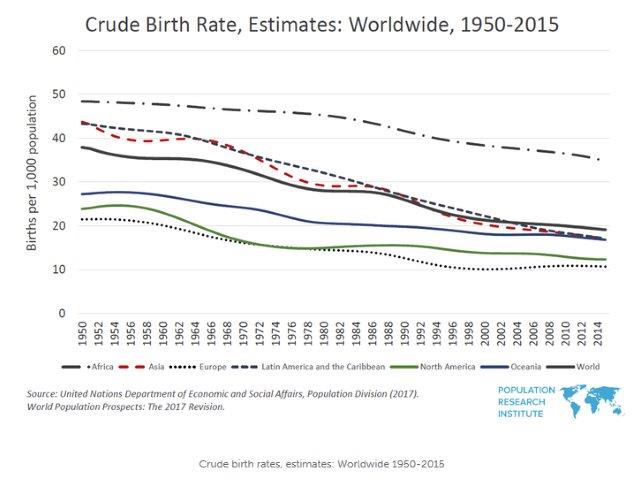
[https://www.pop.org/crude-birth-rate-estimates-1950-2015/]
Xi Jinping Places Catholic Church in China Under Direct Party Control
The decision means that the proposed Vatican-China agreement would not merely be a surrender of the Chinese faithful to the Communist Party—it would be an utter betrayal of the faith. From <https://www.pop.org/xi-jinping-places-catholic-church-in-china-under-direct-party-control/>
Family Planning Organizations Abuse Women and Children
International family planning programs claim to offer “reproductive health,” but instead they bring a host of human rights abuses to the unsuspecting and uneducated. From <https://www.pop.org/family-planning-organizations-abuse-women-and-children/>
Confucius Institutes: Trojan Horses with Chinese Characteristics
Confucius Institutes are described as non-profit public institutions aligned with the government of the People’s Republic of China whose purpose is to promote Chinese language and culture, as well as facilitate cultural exchanges. This seemingly benign purpose leaves out a number of purposes both salient and sinister, namely, sanitizing China’s image abroad, enhancing its “soft power” globally, and creating a new generation of China watchers who well-disposed towards the Communist dictatorship. From <https://www.pop.org/confucius-institutes-trojan-horses-with-chinese-characteristics/>
Resources:

[Sir David Attenborough on Overpopulation]
Sir David performed an outstanding talk about overpopulation to an affluent audience in England. Sir David is a passionate Naturalist and excellent story teller. This is a story that needs to be told and congratulate Sir David on his style and courage to address those who may be the ones who need to hear it most.
[Gapminder – https://www.gapminder.org/]
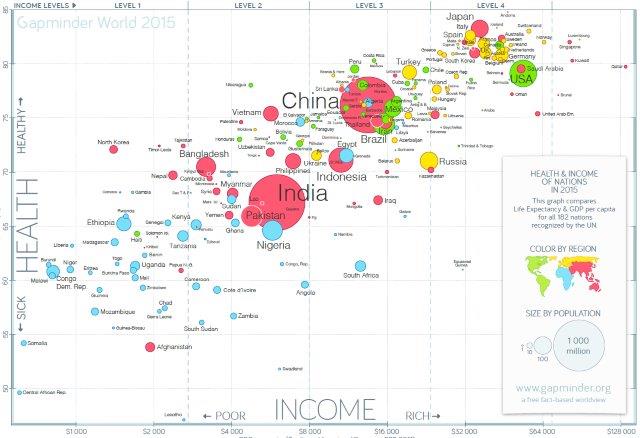
[Why the world population won’t exceed 11 billion _ Hans Rosling _ TGS.ORG]
[Hans Rosling on global population growth]

[Overpopulation facts – the problem no one will discuss Alexandra Paul at TEDxTopanga]
Alexandra Paul the actress is also an activist discussing the overpopulation problem of the planet and pleading with people to have only 1 child.

[The Science of Overpopulation]
The entertaining but informative Henk now doing this SciShow program. A quick 10 min overview of the population facts above showing us the well know and quite startling population graph from 10,000 BC to present. Kid of matches the C02 graph as well.

Population Research Institute (PRI) is this website dealing specifically on what they deem as “The myth of overpopulation” in which they raise some good points and have a valid debate.
[https://overpopulationisamyth.com/]
[https://www.pop.org/]


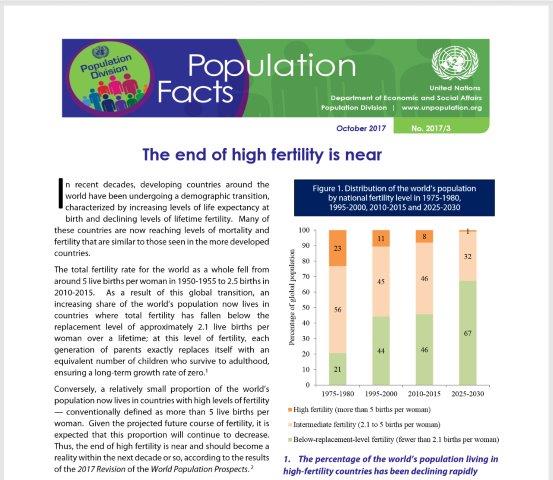



Definitions key to discussions: